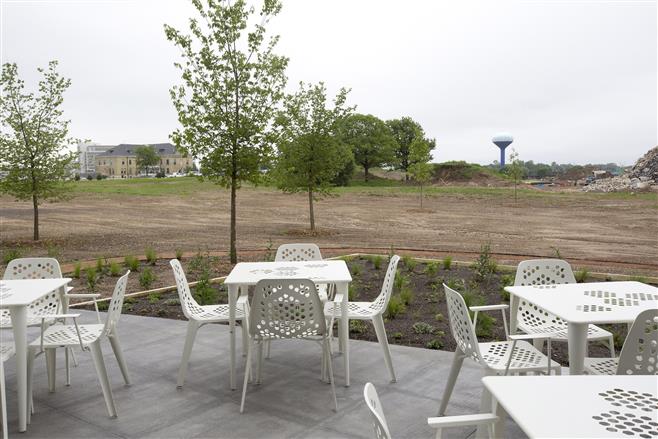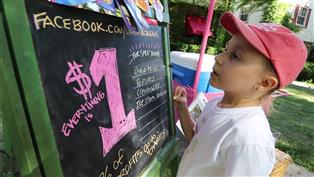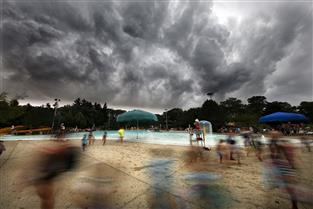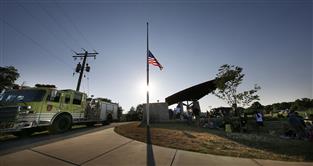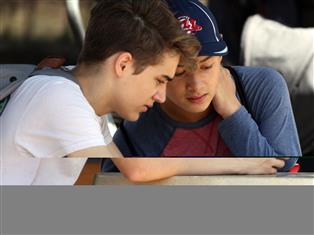Windows into Wauwatosa offers peek into potential at Innovation Campus
In its second annual run, Windows into Wauwatosa offered a rare glimpse into buildings on Wauwatosa's up-and-coming Innovation Campus, which is being cultivated just north of the Milwaukee Regional Medical Center along Discovery Parkway.
While the event opened about 30 buildings to the public Saturday, June 21, Innovation Campus was a particularly popular destination, drawing more than 100 visitors.
Eschweiler buildings
Situated on the northwest side of the campus are the Eschweiler buildings, which have been in the news recently as a destination for The University Laboratory School, a charter school through University of Wisconsin-Milwaukee.
Alan Peters, an agent for the UWM Real Estate Foundation, which owns the property, gave tours of the administration building Saturday. He said the campus was originally built in 1911 by Milwaukee County as the School of Agriculture and Domestic Economy. But after WWI, when kids became more interested in moving to the city than learning to farm in the countryside, the school failed.
Inside, caution tape marked certain areas as off limits — windows were smashed, walls graffitied, light fixtures missing. But relics of the school remained, like wooden toilets, chemistry burners and a chalk board with a morning prayer.
"It's kind of neat to see the potential where we've got an existing school building that we could have a school come back into," Peters said.
The University Laboratory School hopes to at least restore the administration building, for an estimated cost of $2.4 million. If it can raise more, the other buildings on campus could be restored as well.
"We're still working on the funding perspective," Peters said. "There's a long way to go."
Cliff Cole, who works a short stroll away at ABB's new regional headquarters, said he hopes to get involved with the effort to restore the buildings — at least as an individual, if not with his company.
"Today in Milwaukee, it's very rare someone's going to put up a structure with that much architectural appeal," he said.
He also thought it was important to save more than just one building.
"It kind of envelops you, and that envelopment is kind of going to be gone," Cole said. "There's a lot of architectural significance here. Do we as a community have enough respect for architecture to save it?"
Over at ABB, Joseph McCarthy, director of facilities and risk management for the company, gave tours of the building to residents. But Communications Manager Ken Graber requested the tour information not be released to the media at this point, until there is a more formal opening.
Accelerator building
One more short walk south and there's the UWM Innovation Accelerator building, which has big plans for the space and the whole campus. The building houses research labs for engineering professors who will collaborate with the Milwaukee Regional Medical Center, in-house start-up companies and Concordia University pharmacy students to develop and bring medical products to market.
"The idea is that UWM is bringing its lab bench to the Regional Medical Center's bedside," said Dave Gilbert, executive director of Innovation Campus.
With construction just completed, equipment is still being delivered and labs being commissioned. Posters in the labs show what's coming.
Gilbert said many of the researchers will be working on sensors, shrunk down on a computer chip, that can diagnose ailments for pennies. Others study laser treatments for neurological problems, devices to mend bones and video games that promote physical therapy.
A prototyping lab allows researchers to create devices just down the hall from where they design them.
"Think 3-D printers on steroids," Gilbert said. "We can basically manufacture any kind of medical device scientists can conceive of."
Gilbert said he expects the building to be fully operational by September. UWM plans to build an academic building next door that will also engage with the full campus.
More from News and Features
- Anodyne Coffee plans to open location in Wauwatosa Village
- Wauwatosa Meetings: Aug. 4
- Video: Wauwatosa girl's curbside ice cream stand raises money for the hungry
- Wauwatosa News and Notes: Hands-only CPR training offered; Firefly Art Fair is Aug. 6-7
- Wauwatosa Ask Now: Why are there barriers and fencing along the North Avenue bridges over the Menomonee River?
- Mystery Photo Contest: July 28
- Wauwatosa gears up for National Night Out event, this year at the zoo
- Election 2016: Wisconsin's 4th District candidates weigh in
- Wauwatosa's Luther Manor residents share smiles through flower delivery
- Wauwatosa Police Report: July 17-23





